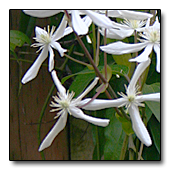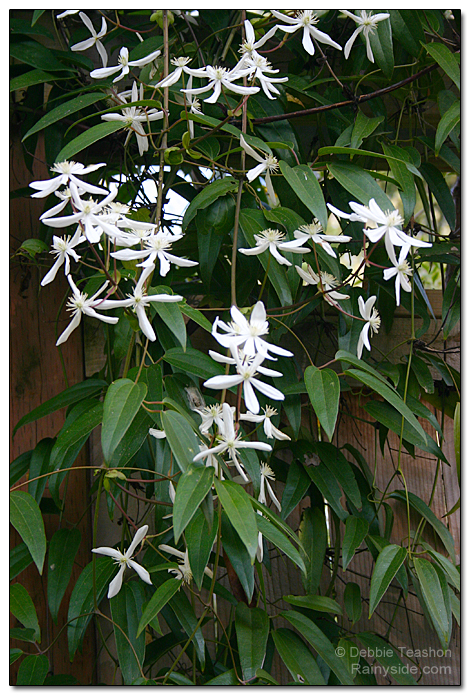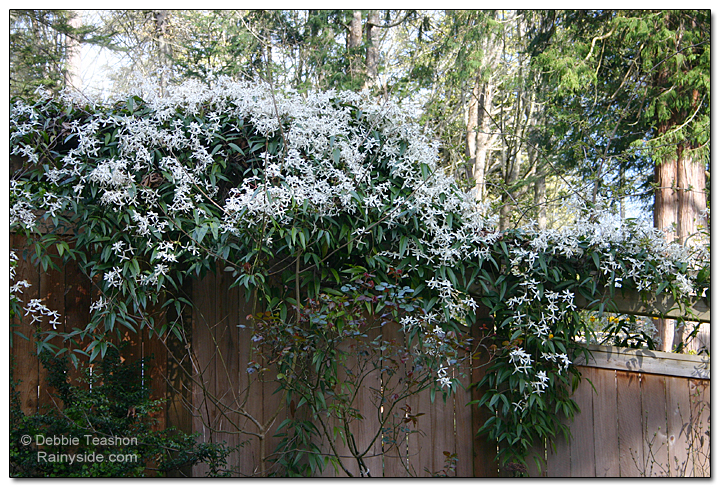Clematis armandii
Family: Ranunculaceae
Pronounced: KLEM-uh-tiss ar-MAHN-dee-eye

Quick Jumps
Growing Guide
Rainy Side Notes
GROWING GUIDE

Origin:
China.
Plant Group:
Vines.
Hardiness:
Sunset zones: 4-9, 12-24.
USDA zones: 6-9. In zones 6 and 7 C. armandii may not grow well. See notes below.
Heat zones: 9-7.
Mature size:
Height: 10-15 feet (3-5 m).
Width: 6-10 feet (2-3 m).
Flowering period:
Early spring.
Flowering attributes:
Fragrant, saucer-shaped, white flowers with creamy-white anthers.
Leaf attributes:
Evergreen, mostly trifoliate, large, pointed, leathery leaves. Young leaves are a bronze color, which turns dark green when the leaf matures.
Light:
Tops in full sun, feet in shade, partial shade.
Soil:
Fertile, humus rich, well-drained soil.
Feeding:
Mulch well with composted manure or compost. Fertilize once a month with a complete organic fertilizer during the growing season.
Propagation Methods:
Layer branches in late winter.
Basal and softwood cuttings in spring.
Division in spring.
Semi-ripe cuttings in early summer.
Pruning Methods:
Pruning group 1 or A.
Rainy Side Notes

Clematis armandii was named in honor of a French missionary, Père Armand David (1826-1900). In England, Ernest Wilson introduced the vine into cultivation in 1900. This vigorous vine seems to be quite popular around the Pacific Northwest. Most often, I see it growing on something too small for this large vine. C. armandii then seeks out other things to climb up into, which can look quite charming in some instances and ridiculous in others. In early spring when it's in full flower, the scent is heavenly.
In summer the old leaves drop off the vine, so you want to site this in a position where the fallen leaves won't be a problem. Because the vine is vigorous, it is best to grow up a medium to a large tree where it can be seen in all its splendor. A small trellis, lamppost or obelisk is not suitable. As beautiful as this vine looks weaving its way across a porch, it is high maintenance to keep the vine in bounds and looking its best.
The best areas to grow C. armandii are in milder regions along the coast and close to Puget Sound. Protected areas help keep the leaves from turning black from cold, drying, winter winds. The blackened leaves cling to the vine until summer and can look unsightly. It flowers in March, a time when hard frosts can destroy the flowers for that year. If you are thinking about where to plant this vine, consider these points, especially if you live in the colder areas of our maritime region.
Planting and Care of Clematis.

Gardening for the Homebrewer: Grow and Process Plants for Making Beer, Wine, Gruit, Cider, Perry, and More
By co-authors Debbie Teashon (Rainy Side Gardeners) and Wendy Tweton
Copyright Notice | Home | Search | Vines

